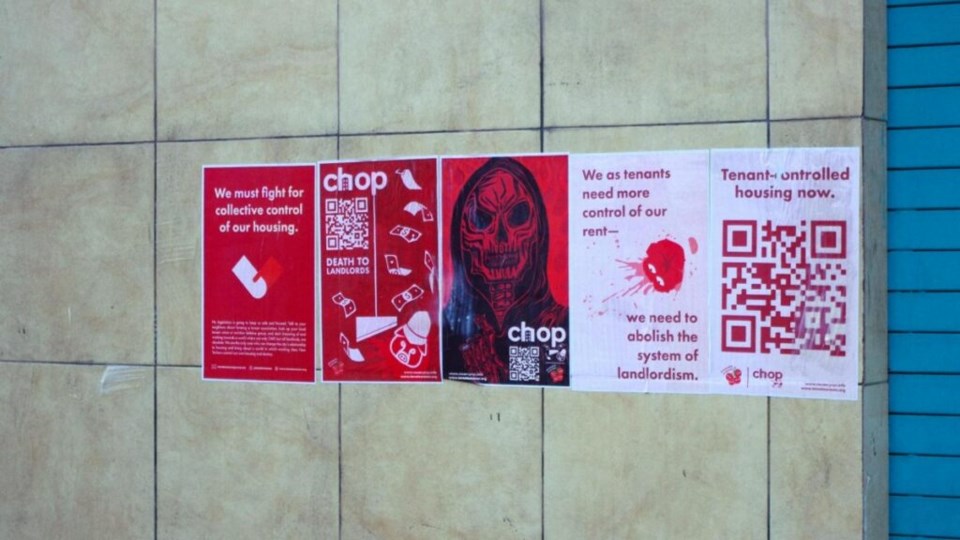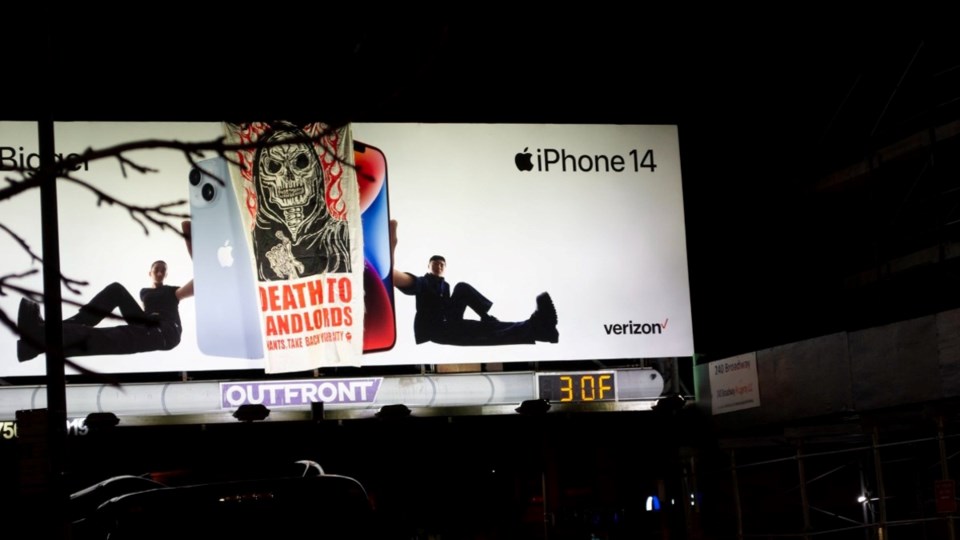Local residents in Williamsburg may have noticed an unusual banner pop up in their neighborhood this week. The banner belongs to an autonomous collective of New York tenants known as Tomato Season.
The collective is pushing back against the region’s landlords, saying they have gone too far with recent attempts to challenge rent stabilization laws.
“Landlords may find their allies in the court, but we find ours right next door. Tenants are the majority of New Yorkers. Together, we will not be intimidated, robbed, divided or thrown out of our homes,” Tomato Season stated in a press release on Dec. 19.
The group has launched a campaign that demands unconditional housing for all. Recently, the group launched a website, postered the streets of Brooklyn with information for tenants and hung a banner over Williamsburg.

The campaign is in direct opposition to the Community Housing Improvement Program, an organization of 4,000 landlords that control 400,000 rent-stabilized buildings across the city.
According to Tomato Season, CHIP has filed a case in the Supreme Court to allege that rent stabilization is an unconstitutional government taking of private property.
Outside of the courts, local tenants say landlords are waging a war on rent stabilization by warehousing apartments, keeping units vacant to create a housing crisis that they can then use as evidence in their legal case.
Tomato Season suggests that the lawsuit challenges the terms of the Housing Stability and Tenant Protection Act of 2019. The Act restricted rent hikes and granted family members of tenants inheritance of their lease when they passed away.
“Regardless of what happens in the Supreme Court, we will join our neighbors in tenant unions, eviction defenses, rent strikes and public rallies,” states the group.
This summer, the Rent Guidelines Board approved the largest rent increase for rent-stabilized units in nearly a decade. And while tenants pay more to landlords, they often live in declining conditions, the group said.
A Look at Landlords in New York
CHIP claims the Supreme Court lawsuit is to advocate for small landlords. However, according to Tomato Season, the average landlord in New York City owns approximately 21 buildings or 893 units.
The collective points to some alarming examples of local landlords, including CHIP treasurer, Matthew Schmelzer. Schmelzer owns 32 buildings, totaling over 1,700 units in the Bronx and Harlem.
According to public data, he has filed 2,648 evictions and executed 67 evictions in the past five years. These removals occurred in buildings with 2,602 violations and 3,594 complaints, of which 197 major violations — an average of six per building — remain open to this day.
Barry Rudofsky, vice chairman of CHIP, owns 120 buildings with 2,877 open violations, 2,912 eviction filings, and 128 evictions executed. Rudofsky eliminated 408 rent-stabilized units from his buildings between 2007 and 2020.
A voting member of CHIP, John Ilibassi owns 101 buildings that currently have 2,075 open violations. He has executed 23 evictions since 2017. He removed 589 units from rent stabilization status between 2007 and 2020.
Tenant Demands
With a campaign well underway, the group is demanding:
- Unconditional housing for all
- Rent rollbacks
- Representation in court for all tenants
- Requesting the city to explore a collective tenant-lead improvement and management of neglected buildings, instead of tax breaks for landlords
“We demand that all vacant apartments become homes for our neighbors. We demand a city where no one can use another person's home to turn a profit nor expel a person from their home under any circumstance. Nothing short of tenant-controlled housing will ensure a safe, liveable city for all New Yorkers,” the group stated.
The pleas come on the heels of some damaging statistics about homelessness. Recent statistics show that houselessness has reached the highest levels since the Great Depression, with 55,036 people, including 17,680 children, sleeping in the city's main municipal shelter system each night.
These numbers do not include people who cannot gain access to a shelter or choose not to sleep in one due to concerns about mistreatment, virus spread and more.
Meanwhile, Tomato Season claims there are more vacant units in the city than homeless people, by approximately three times.




